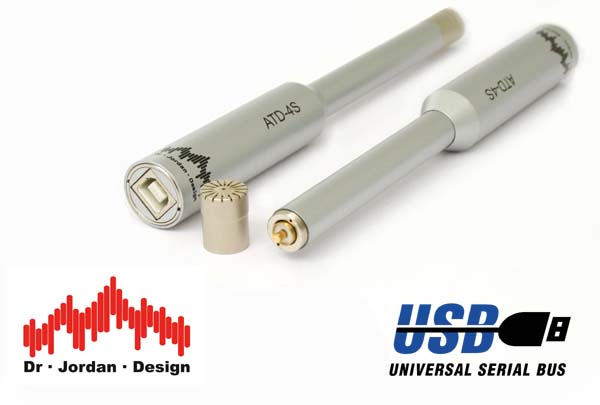In this article we summarize the most important properties of measurement microphones. However, we have written additional articles on specialized topics
-
Measurement of high sound levels (SPL) >120dB
-
Measurement of very low levels <20dB, ultra low noise measurements
-
Calibration methods for microphones
- Chirping noises or chirping with USB microphones
- Detect defective microphones
- Radio links (wireless connections) for measurement microphones
- Measurement microphones internals
- UMIK1 vs UMIK2
Measurement microphones: basics and general information
A microphone converts the incoming sound into an electrical voltage. Unlike e.g. vocal microphones, measurement microphones are optimized for audio measurement technology.
General requirements for measurement microphones
- Constant frequency response in a defined range
- Defined directional characteristic, mostly omnidirectional
- low noise
- High maximum sound level
- Insensitive to environmental influences such as temperature and static air pressure
- Long-term stability
Selection from connector type
Measurement microphones are today available with different connectors. These connectors are completely different, mechanically and electrically. The circuit design concepts are very different. Therefore, adapters are only available in special cases e.g. ICP to P48,
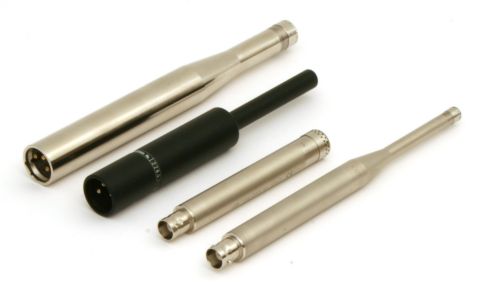
- Lemo: This connection is common in professional measurement technology and can be found in premium devices with the highest demands on the signal dynamics. This connector supplies over 100V to the preamplifiers. Therefore, the Lemo preamplifiers usually process very high input voltages. In addition, the external polarization voltage of 200V is transmitted. Lemo is used when no compromises are to be made.
Advantages: best dynamics and signal performance Disadvantages: high costs, cables and connectors are expensive - ICP/IEPE constant current supply This variant is the most common in professional measurement technology (the "workhorse") and is easily recognizable by the typical BNC connection. With this connection, the microphone signal is modulated on a constant current source with 24V and 4mA. Due to this special transmission, the supply and the signal can be transmitted simultaneously via a normal coaxial cable. Due to the constant current impression, the useful signal is relatively insensitive to interference and cables over 100m can be used without any problems. These systems typically handle input voltages of 6V RMS. Although these microphones have a BNC connector, they cannot be connected directly to oscilloscopes (even those with BNC). The special constant current feed, which can be achieved via adapter boxes, is missing.
Advantages: good signal dynamics, cheap and long cables Disadvantages: special supply, input voltage limited to 6V RMS
-
XLR with P48V This method comes from studio technology and uses symmetrical signal transmission with an impressed supply voltage of 48V. The 48V was originally used as an external polarization voltage for condenser microphones and was therefore only designed for very low power consumption. The connection is 3-pin with an XLR connector. Typical XLR measurement microphones only deliver approx. 3V RMS and are therefore not very stable. The 48V were never designed for powerful preamps. This type of connection is more likely to be found in price-conscious measuring devices. However, with the NTI XL2 or the Bedrock SM50, this connection has found wide acceptance for acoustic measurement technology.
Advantages: sufficient signal dynamics in many cases, very cheap and relatively long cable (50m) Disadvantages: input voltage limited to 3V RMS
-
USB measurement microphones This relatively new connector is designed to connect measurement microphones directly to a computer. Microphone, preamplifier, power supply and direct digitization are integrated into one device. These individual components are optimally matched to each other. High-quality USB measurement microphones generate various auxiliary voltages themselves from the 5V USB supply through DC/DC converters. As a result, the signal dynamics - especially the level stability - is enormous and amounts to approx. 10V RMS. These are 28V peak/peak! High-end USB microphones also generate the external polarization voltage of 200V for non pre-polarized microphone capsules.
Advantages: Very easy connection to computer-aided PC measurement systems such as Akulap. Very high signal dynamics possible. Disadvantages: Cables are limited to around 20m. Due to direct digitization, USB measurement microphones cannot be connected to analog inputs.
Converter principles
How is the sound converted into a voltage?
There are essentially the following types of microphones with different converter principles
- Condenser Microphones
- Dynamic microphones
- MEMS microphones
- Special solutions such as optical microphones
Condenser Microphones
A condenser microphone consists of a back-electrode and a membrane that is stretched in front of the back-electrode at a very small distance. The membrane is moved by the sound and this changes the capacitance of the capacitor. This change in capacitance is converted into an electrical signal.
Dynamic Microphones
Dynamic microphones play no role in the field of measurement technology. They consist of a membrane that moves a coil in a magnetic field, thereby generating a voltage. Such microphones are mainly found in recording and studio microphones. Dynamic microphones often show a pronounced "crooked" frequency response with pronounced resonances. This type also has low sensitivity and is therefore much more noisy.
MEMS microphones
A relatively new category are the MEMS microphones. These are special micromechanical components that can be manufactured inexpensively using chip manufacturing technologies. You can find MEMS microphones in almost all smartphones.
In recent years, these microphones have also proven themselves for measurement purposes. A particular advantage of these microphones is their low price and high stability. This makes these microphones particularly suitable for array microphones, where a large number of microphones are used. A current disadvantage of MEMS microphones is their high inherent noise, which currently does not come close to classic 1/2-inch microphone capsules. In addtion, high SPL is still a challange
Details of the condenser microphones
Nowadays, condenser microphones are mainly used for measurement purposes. These microphones have standardized designs. The size is given in inches (“).
The ½" condenser microphones are the workhorses of acoustic measurement technology.
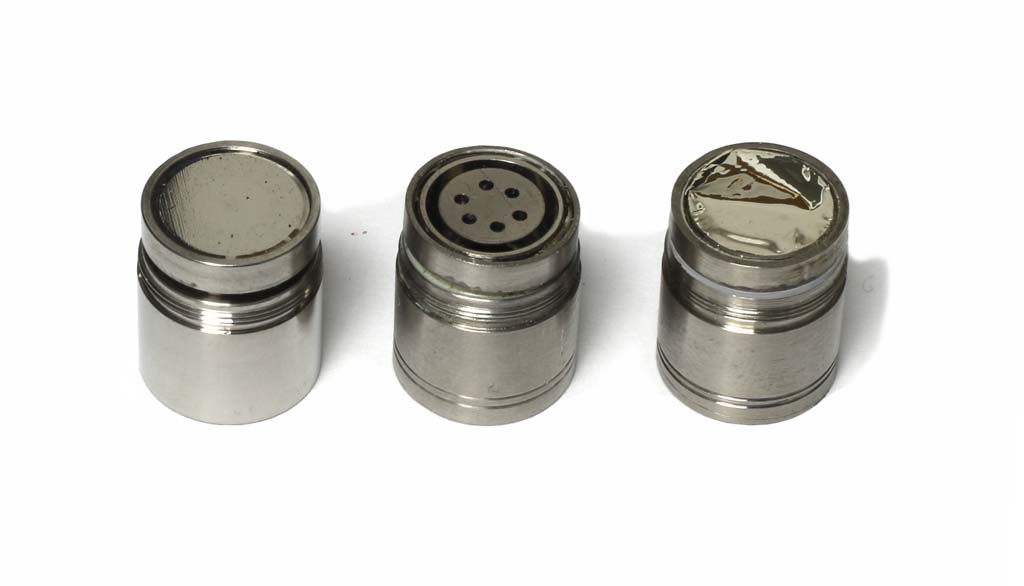
The most left capsule is a normal working capsule without protective grid. The middle shows the back-elektrode, while the diaphragma has been removed. The most right shows a defective capsule (mechanical shock from dropping to the floor)
There are two basic types of condenser microphones:
- Microphones with external polarization voltage. This is usually 200 volts. These microphones are designed for professional use, because they require a special supply voltage. But these microphones are extremely long-term stable.
- Nowadays, however, so-called electret microphones are mainly used. These electret microphones use a special membrane that is already electrically pre-charged. Therefore, these microphones do not require a complex power supply. Nowadays, however, these microphones are also very stable over the long term and are therefore used in most sound level meters.
Frequency response requirements according to DIN/IEC61672-1
The DIN/IEC61672-1 standard defines various requirements for a sound level meter. Only certain deviations are permitted for the frequencies in the range between 10Hz and 20kHz. A distinction is made between class 1 and class 2 microphones. Class 1 devices are often required throughout for professional measurement technology. In practice, the deviation in condenser measurement microphones typically only shows up above 5kHz. The frequency response of the microphone is irrelevant for room acoustic measurements (RT60).
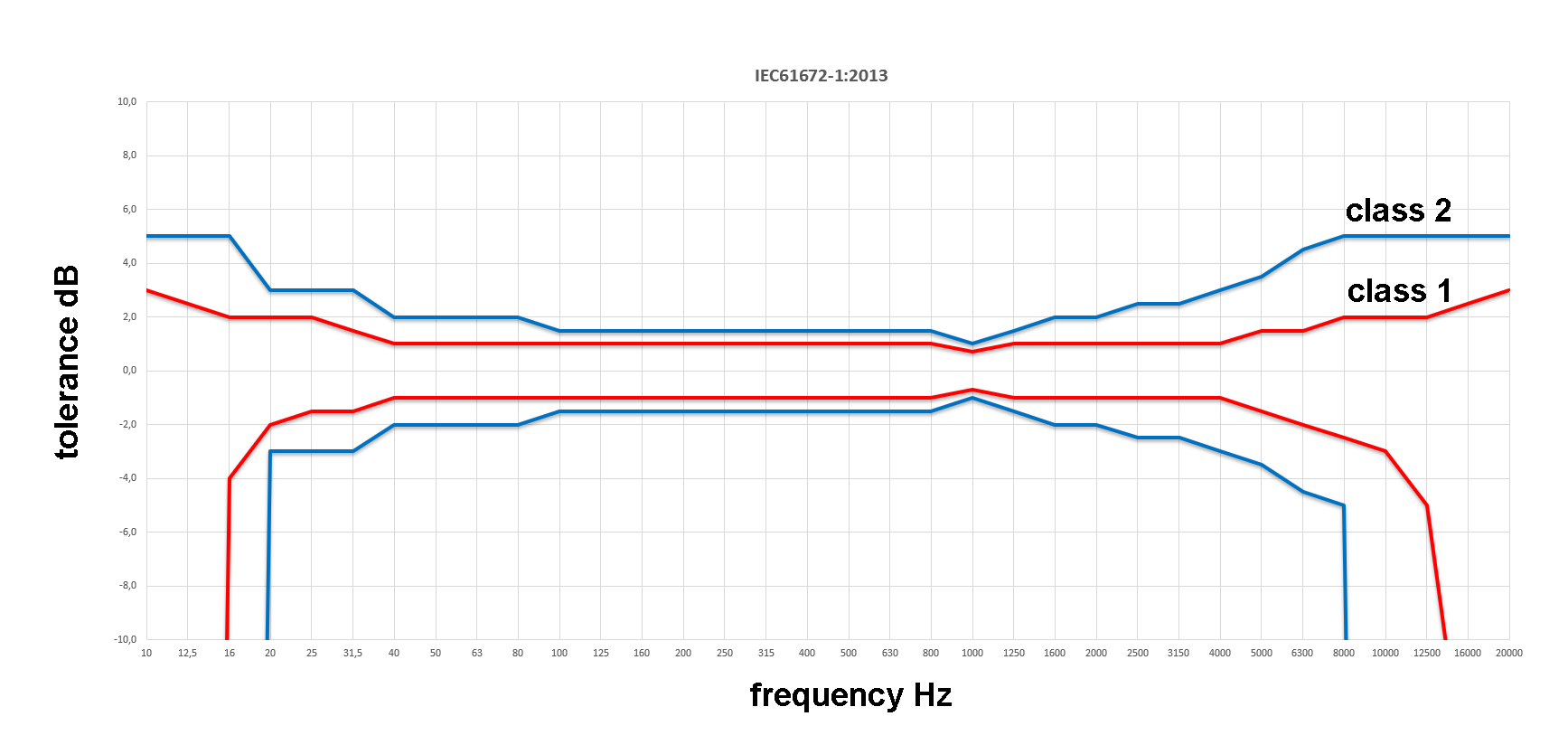
Size of the diaphragm of a condenser microphone
Condenser microphones are divided into categories based on the diaphragm diameter. The most common size is 1/2".
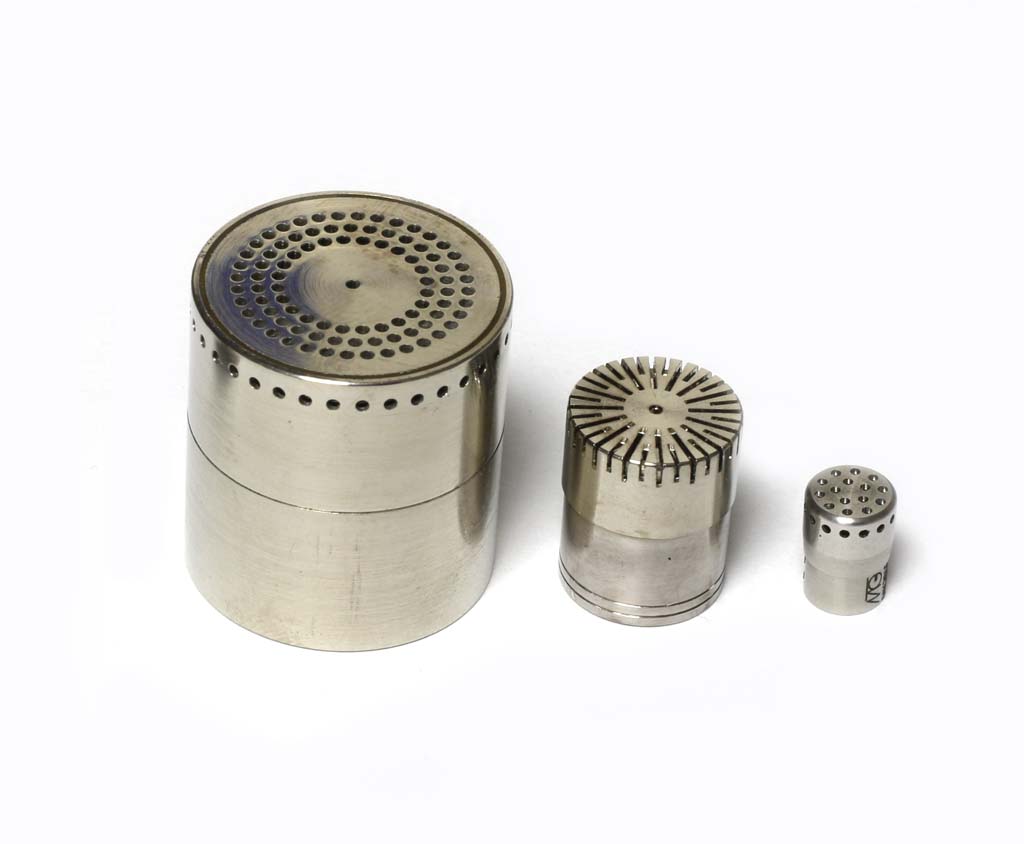
There are also 1-inch microphones with a very large membrane area. As a result, these microphones have less intrinsic noise and higher sensitivity. However, these advantages are bought with a very strong acoustic effect at higher frequencies, even starting from 3kHz.
Therefore, these measurement microphones are rarely used today. However, they are excellently suited for low frequencies down to the infrasound range.
However, a ¼” microphone capsule is much more common. These capsules are suitable for higher frequencies up to 70 to 100 kHz, but also for high sound levels. On the other hand, these microphones have a lower sensitivity and can therefore record much higher sound levels, up to around 170 decibels. On the other hand, these microphones have a higher inherent noise. Typically this is around 35dB(A). Therefore, these microphones are not used for low-noise measurements.
basic rule:
Large diaphragma area: low noise but low maximum frequency and lower maximum sound level
Sensitivity of a measurement microphone
The sensitivity of a measurement microphone is the transmission factor between the incident sound and the electrical voltage generated. This factor is given in mV per pascal.
A common ½" condenser microphone has a sensitivity of 50mV/Pa. At a sound level of 1Pa, a voltage of 50mV is present at the microphone. The sound pressure of 1Pa corresponds exactly to 94dB. This matches the sound pressure level of a typical sound level calibrator.
The significantly smaller 1/4" capsules have a sensitivity of 5mV/Pa.
Directivity pattern
In acoustic measurement technology, non-directional microphones are usually used (omnidirectional characteristics).
Studio microphones usually have a different directivity, e.g. to attenuate signals behind the speaker.
equalization
Due to their design, condenser microphones are initially pure sound pressure receivers. Depending on the signal frequency and the size of the microphone, diffraction effects become noticeable due to the geometry. In a free field, deviations occur at higher frequencies. These deviations are compensated by a built-in correction. This is the free field correction. However, some microphone types are specially designed for diffuse sound incidence and are compensated accordingly.
Free-field equalized measurement microphones are used most frequently. Diffuse field equalized microphones are used in a reverberation room.
Uncompensated pressure field microphones are often used in couplers (e.g. ear simulators).
At lower frequencies below 5 kHz, the behavior of these microphones is almost identical. The compensation only becomes noticeable at higher frequencies. Externally, these microphone types are indistinguishable,
The following picture shows a typical 1/2" capsule (MTG MK222), which is equalized for free field conditions. Here you can clearly see the differences to the pressure field and a diffuse sound incidence.
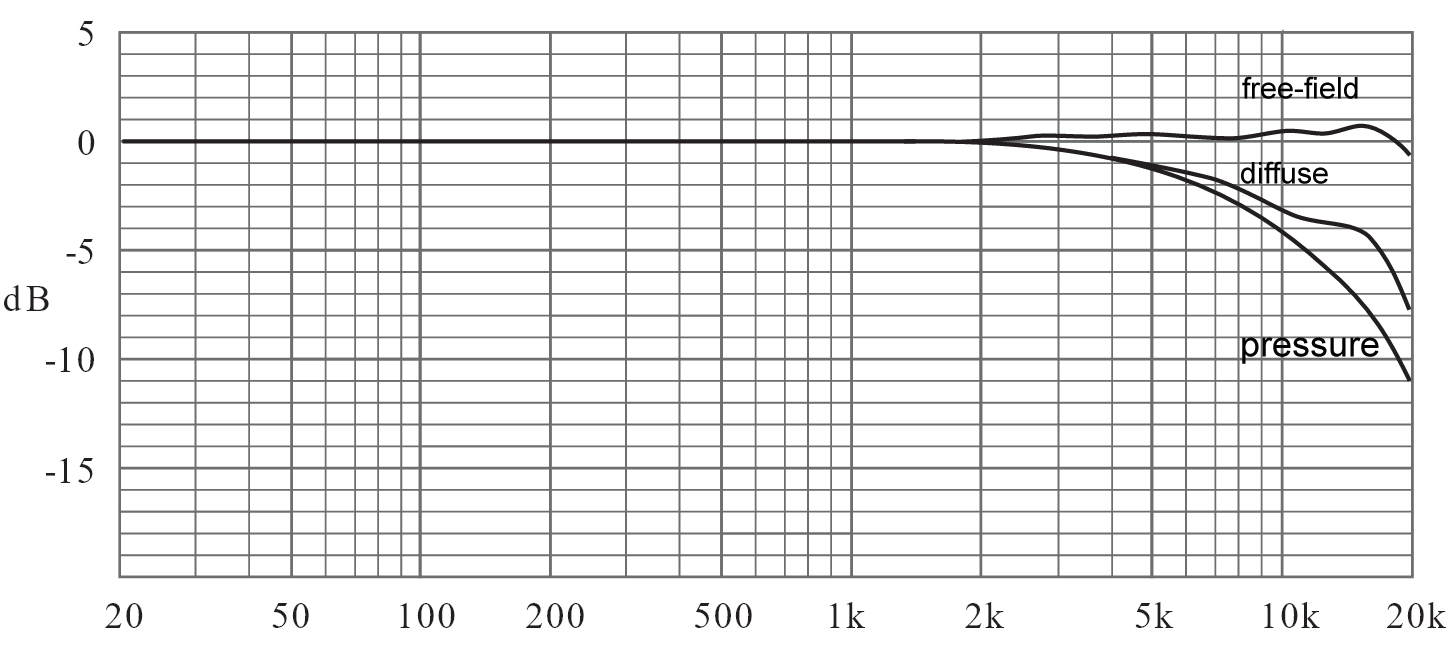
Are 200V microphones dangerous?
No, the 200V voltage is only used to polarize the membrane. Practically no current flows. Therefore, the supply for the 200V is extremely high-impedance (Giga-Ohm). When touched, the voltage collapses immediately. The touch is noticeable but harmless. It corresponds to an electrostatic discharge.
What accuracy can be achieved in practice?
Measurement microphones achieve their high level of accuracy under precisely defined sound field conditions. This is usually an open field. In practice, however, measurements are taken in normal rooms. Reflections on walls and other objects create significant resonances that change the sound field considerably. The spatial effect is in the range of up to 20dB and is therefore considerably larger than the differences between class 1 and class 2 microphones. It therefore makes little sense to measure loudspeakers with an ultra-precise microphone with deviations of less than 0.1dB in an acoustically untreated room. In the end, you really only miss the room and neither the microphone nor the loudspeaker have a great influence.
Measurement of very low frequencies (infrasound)
In principle, condenser microphones are able to measure frequencies down to 0Hz. That would then be a barometer. In practice, however, this effect is usually undesirable, since changes in air pressure due to the weather or different altitudes have a strong influence. The membrane would simply swell or dent. Therefore, equalization openings - capillaries - are installed behind the membrane, which ensure pressure equalization. The design defines the lower limit frequency of the microphone. Typically this is below 10Hz.
Caution: There are microphone capsules that vent directly from the capsule. Others vent through the preamp, which then needs an equalization port. Here you have to be careful that you match the capsule and preamplifier to each other. Otherwise there can be significant disruptive effects. We already have deviations at 100Hz! observed from 1-2dB.
Measurement of low sound levels
For several years, the requirements in the field of acoustic measurement technology have increased significantly. A refrigerator or an air conditioner in the living area should be as quiet as possible. Many of these devices cannot be measured with sufficient accuracy, even with high-quality sound level meters. We have written a dedicated article for low noise measurements.
Maximum sound level
Typical measurement microphones can easily record levels below 120dB. However, if higher levels need to be measured, many factors must be taken into account. We have summarized this information in a separate article.
Measurement Microphones disassembled
We disassembled several commercial available microphones and give you a detailed look inside these measurement microphones. Currently we cover the
- Behringer ECM8000
- MiniDSP UMIK-1
- MiniDSP UMIK-2
This article is intended for technical oriented readers.



